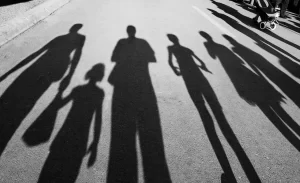Business and Human Trafficking: A Social Connection and Political Responsibility Model

Human trafficking is one of the most lucrative international criminal activities and is widespread across a variety of industries. The response to human trafficking in corporate supply chains has been dominated by analyses of due diligence obligations. Existing scholarship, however, has cast doubt on the effectiveness of corporate due diligence in addressing human trafficking, because human trafficking is the outcome of macro-level social structures that are created by and consist of multiple actors, including business. The outsourcing and sub-contracting model provides incentives throughout the global supply chain to sub-contract further to reduce the cost of labor, which has led to human trafficking remaining a pervasive problem. Business responsibility for human trafficking derives from the fact that business decisions and strategies enable the conditions that allow for human trafficking to occur within their supply chains. To address human trafficking, we propose a social connection and political responsibility model, based on Iris Marion Young’s analysis of social connection and structural injustice, that is holistic, forward-looking, and outcomes-oriented. We differentiate between businesses with a strong connection to human trafficking and businesses with a weak connection, and within this distinction delineate different pathways that firms can take to meet their political responsibilities to address human trafficking. We conclude with implications for future research.
Incident of Human Trafficking in Nepal

Mizoram police, state social welfare department along with Community Health Action Network (CHAN), an NGO working for the welfare of person in need, have handed over 23 Nepali women, suspected to be victims of human trafficking, to Nepal government, a police officer said on Monday.
The officer said that the adult women, who were lodged at different protective homes under social welfare department, were transported towards their country and handed over to the Nepal government last week.
The Nepali women were rescued from Champhai and Aizawl while being trafficked in late April.
Some of them had already been in Middle East. They were being transported to Delhi from where they were taken to Guwahati. From Guwahati, they were transported to Aizawl, from where they were supposed to enter Myanmar.
Police said that the women entered Mizoram in different phases of groups.
The police had arrested one suspected identified as Lal Bahadur, who helped the girl in Aizawl. He has been detained in judicial custody for further interrogation.
Following the report of trafficker using Mizoram as safe passage for human trafficking, the state police have sounded alert across the state especially in the international borders.
Sandwiched between Myanmar and Bangladesh, Mizoram shares over 800 km long international border with the two countries.
On April 23, the Mizoram police had arrested eight Rohingya women, trapped by traffickers, at Vairengte check gate on the Mizoram-Assam border while attempting to enter the state without valid travel documents. This was followed by the rescue of eight Rohingya girls and four boys, suspected to be trafficked, from the resident of a widow in Aizawl’s Edenthar locality on May 5.
While the eight Rohingya women are yet to be sent to foreigner detention centre in Assam, the Rohingya girls and boys are still lodged at protective homes in Aizawl.
The police had also arrested over 100 non-indigenous people for allegedly living in Mizoram without Inner Line Permit (ILP).
Source: eastmojo.com
